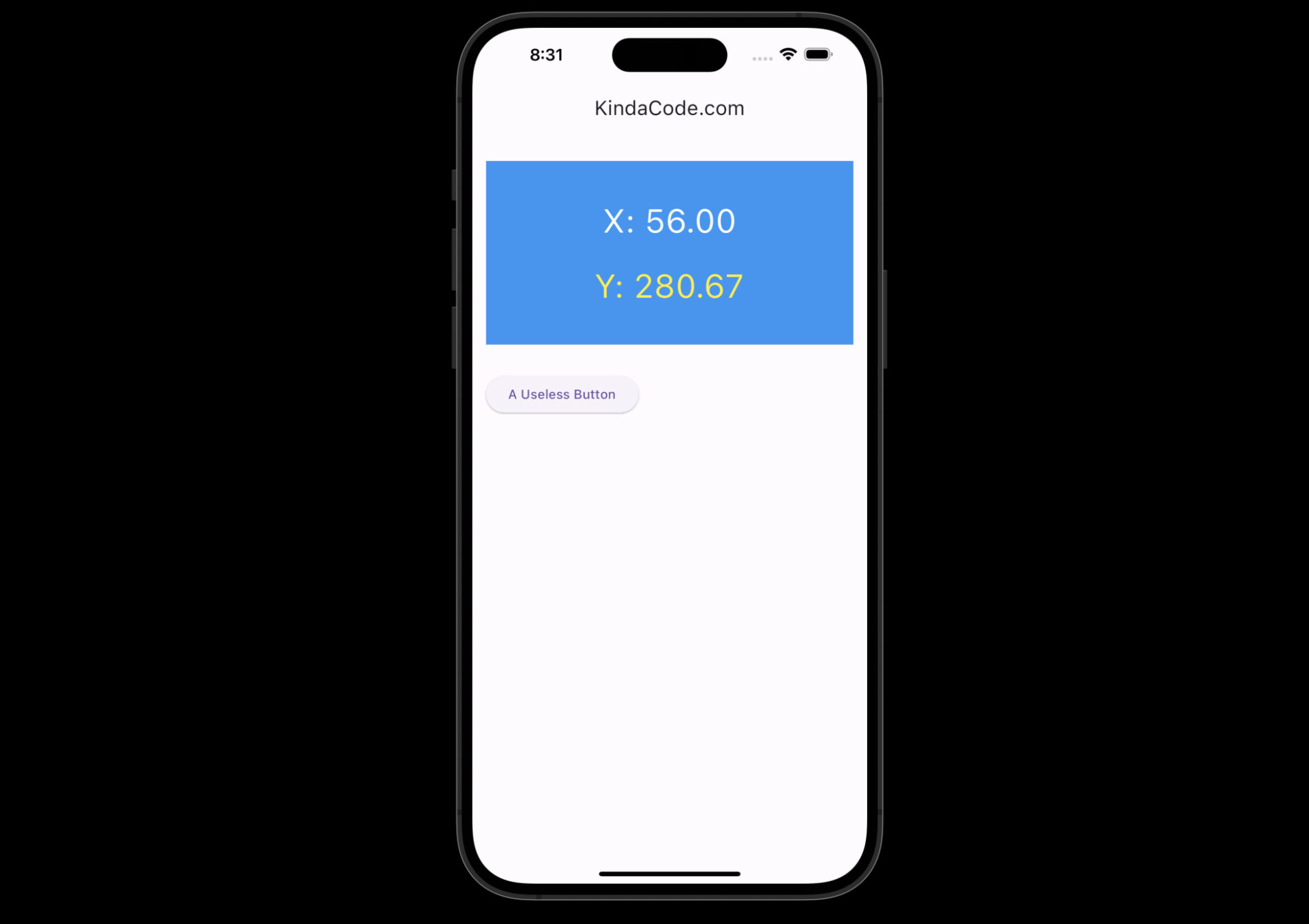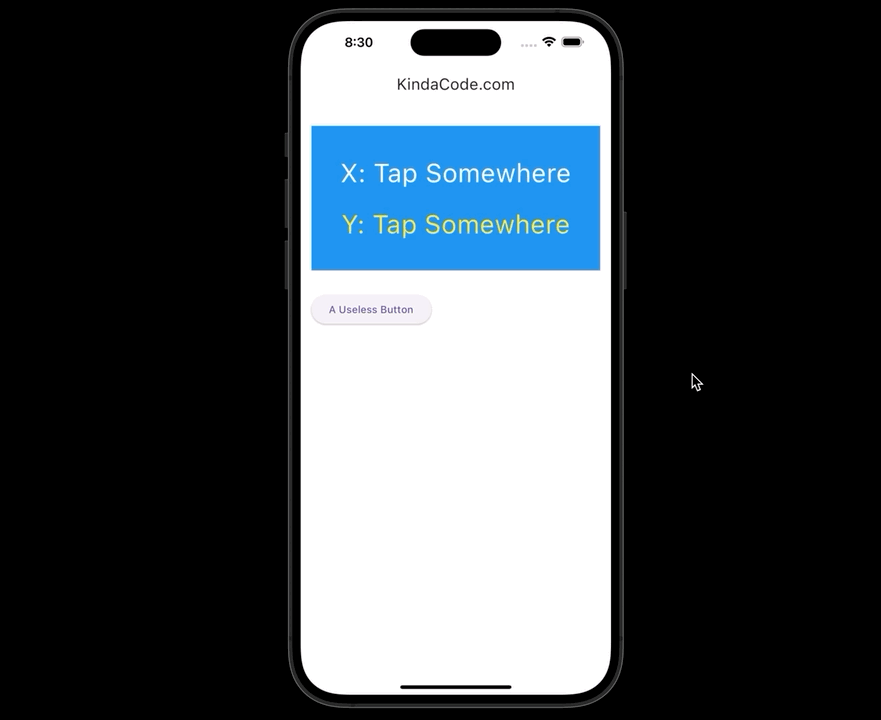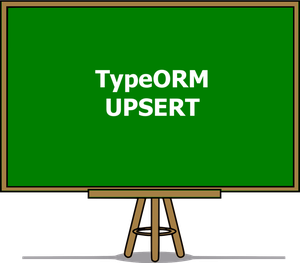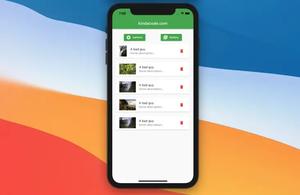
This short and straightforward article shows you how to get the location (X and Y coordinates) of a tap in Flutter.
Table of Contents
What is the Point?
What you need to do is to wrap your entire screen (or a certain area) within a GestureDetector widget and listen to the onTapDown or onTapUp event, like this:
GestureDetector(
onTapDown: (details){
final tapPosition = details.globalPosition;
final x = tapPosition.dx;
final y = tapPosition.dy;
// do something with x & y
},
child: Scaffold(/* ...*/)
)Note that the action of getting tap location doesn’t prevent the user from interacting with other widgets like buttons, forms, etc. For more clarity, see the full example below.
The Example
App Preview
This demo captures the tap location (where the user’s finger hits the screen) and then presents the results on the screen:

The Code
The complete code in main.dart with explanations in the comments:
// kindacode.com
// main.dart
import 'package:flutter/material.dart';
void main() {
runApp(const MyApp());
}
class MyApp extends StatelessWidget {
const MyApp({Key? key}) : super(key: key);
@override
Widget build(BuildContext context) {
return MaterialApp(
// Remove the debug banner
debugShowCheckedModeBanner: false,
title: 'KindaCode.com',
theme: ThemeData(
primarySwatch: Colors.amber,
),
home: const KindaCodeDemo(),
);
}
}
class KindaCodeDemo extends StatefulWidget {
const KindaCodeDemo({Key? key}) : super(key: key);
@override
State<KindaCodeDemo> createState() => _KindaCodeDemoState();
}
class _KindaCodeDemoState extends State<KindaCodeDemo> {
// the tap location
Offset? _tapPosition;
// this function is called when the user taps somewhere on the screen
void _getTapPosition(TapDownDetails details) async {
final tapPosition = details.globalPosition;
setState(() {
_tapPosition = tapPosition;
});
}
@override
Widget build(BuildContext context) {
return GestureDetector(
onTapDown: (details) => _getTapPosition(details),
child: Scaffold(
appBar: AppBar(title: const Text('KindaCode.com')),
body: Padding(
padding: const EdgeInsets.symmetric(vertical: 30, horizontal: 15),
child: Column(
crossAxisAlignment: CrossAxisAlignment.start,
children: [
Container(
width: double.infinity,
height: 200,
color: Colors.blue,
padding: const EdgeInsets.all(20),
child: Column(
mainAxisAlignment: MainAxisAlignment.center,
children: [
// Display X coordinate of tap
Text(
'X: ${_tapPosition?.dx.toStringAsFixed(2) ?? "Tap Somewhere"}',
style: const TextStyle(fontSize: 36, color: Colors.white),
),
const SizedBox(
height: 20,
),
// Display Y coordinate of tap
Text(
'Y: ${_tapPosition?.dy.toStringAsFixed(2) ?? "Tap Somewhere"}',
style:
const TextStyle(fontSize: 36, color: Colors.yellow),
),
],
),
),
// the action of getting tap location doesn't prevent user from interacting with other widgets like buttons, forms, etc.
// the purpose of the button below is to demonstrate that
const SizedBox(
height: 30,
),
ElevatedButton(
onPressed: () =>
ScaffoldMessenger.of(context).showSnackBar(const SnackBar(
content: Text('Hi There'),
)),
child: const Text('A Useless Button')),
],
),
),
),
);
}
}Conclusion
You’ve learned how to determine the X and Y coordinates of the hitting point of a tap. Continue exploring more new and fascinating stuff in the modern Flutter world by taking a look at the following articles:
- TabBar, TabBarView, and TabPageSelector in Flutter
- Flutter BottomAppBar: Tutorial & Examples
- Flutter + Firebase Storage: Upload, Retrieve, and Delete files
- Flutter and Firestore Database: CRUD example
- Working with ListWheelScrollView in Flutter (2 Examples)
- Using Stepper widget in Flutter: Tutorial & Example
You can also tour around our Flutter topic page or Dart topic page for the most recent tutorials and examples.



















